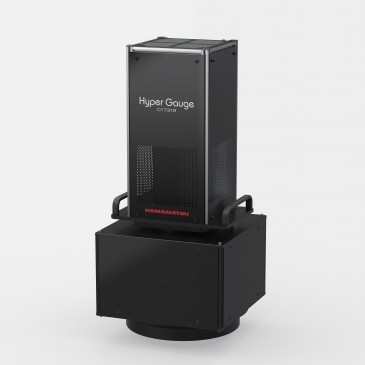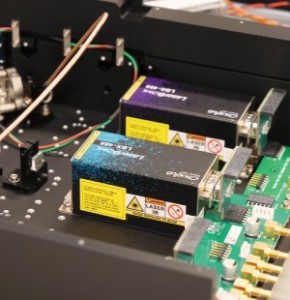
The future of faster, more efficient information processing may come down to light rather than electricity. Mark Lawrence, a postdoctoral scholar in materials science and engineering at Stanford, has moved a step closer to this future with a scheme to make a photon diode – a device that allows light to only flow in one direction – which, unlike other light-based diodes, is small enough for consumer electronics.
All he had to do was design smaller-than-microscopic structures and break a fundamental symmetry of physics.
“Diodes are ubiquitous in modern electronics, from LEDs (light emitting diodes) to solar cells (essentially LEDs run in reverse) to integrated circuits for computing and communications,” said Jennifer Dionne, associate professor of materials science and engineering and senior author on the paper describing this work, published July 24 in Nature Communications. “Achieving compact, efficient photonic diodes is paramount to enabling next-generation computing, communication and even energy conversion technologies.”
At this point, Dionne and Lawrence have designed the new photon diode and checked their design with computer simulations and calculations. They’ve also created the necessary nanostructures – the custom smaller-than-microscopic components – and are installing the light source that they hope will bring their theorized system to life.
“One grand vision is to have an all-optical computer where electricity is replaced completely by light and photons drive all information processing,” Lawrence said. “The increased speed and bandwidth of light would enable faster solutions to some of the hardest scientific, mathematical and economic problems.”
Spinning light, breaking laws
The main challenges of a light-based diode are two-fold. First, following the laws of thermodynamics, light should move forward through an object with no moving parts in the exact same way it would move backward. Making it flow in one direction requires new materials that overturn this law, breaking what’s known as time-reversal symmetry. Second, light is much more difficult to manipulate than electricity because it doesn’t have charge.
Other researchers have previously tackled these challenges by running light through a polarizer – which makes the light waves oscillate in a uniform direction – and then through a crystalline material within a magnetic field, which rotates the polarization of light. Finally, another polarizer matched to that polarization ushers the light out with near-perfect transmission. If light is run through the device in the opposite direction, no light gets out.
Lawrence described the one-way action of this three-part setup, known as a Faraday isolator, as similar to taking a moving sidewalk between two doors, where the sidewalk plays the role of the magnetic field. Even if you tried to go backward through the last door, the sidewalk would usually prevent you from reaching the first door.
In order to produce a strong enough rotation of the light polarization, these kinds of diodes must be relatively large – much too large to fit into consumer computers or smartphones. As an alternative, Dionne and Lawrence came up with a way of creating rotation in crystal using another light beam instead of a magnetic field. This beam is polarized so that its electrical field takes on a spiral motion which, in turn, generates rotating acoustic vibrations in the crystal that give it magnetic-like spinning abilities and enable more light to get out. To make the structure both small and efficient, the Dionne lab relied on its expertise in manipulating and amplifying light with tiny nano-antennas and nanostructured materials called metasurfaces.
The researchers designed arrays of ultra-thin silicon disks that work in pairs to trap the light and enhance its spiraling motion until it finds its way out. This results in high transmission in the forward direction. When illuminated in the backwards direction, the acoustic vibrations spin in the opposite direction and help cancel out any light trying to exit. Theoretically, there is no limit to how small this system could be. For their simulations, they imagined structures as thin as 250 nanometers. (For reference, a sheet of paper is about 100,000 nanometers thick.)
What’s possible
Big picture, the researchers are particularly interested in how their ideas might influence the development of brain-like computers, called neuromorphic computers. This goal will also require additional advances in other light-based components, such as nanoscale light sources and switches.
“Our nanophotonic devices may allow us to mimic how neurons compute – giving computing the same high interconnectivity and energy efficiency of the brain, but with much faster computing speeds,” Dionne said.
“We can take these ideas in so many directions,” Lawrence said. “We haven’t found the limits of classical or quantum optical computing and optical information processing. Someday we could have an all-optical chip that does everything electronics do and more.”
This article orginally reported by Stanford News Service






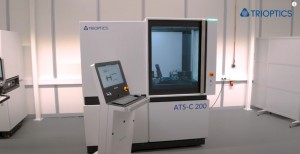
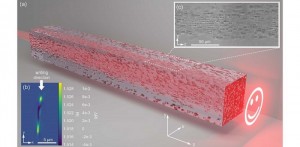
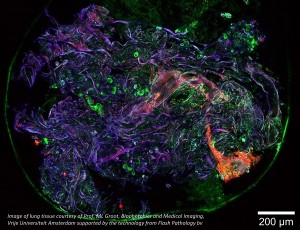

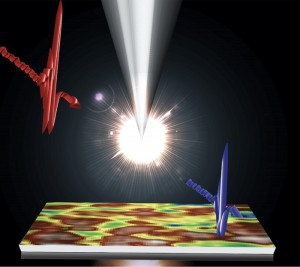

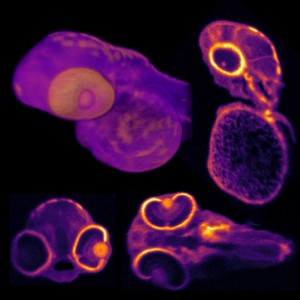
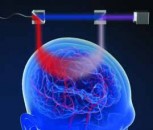

















 Back to News
Back to News